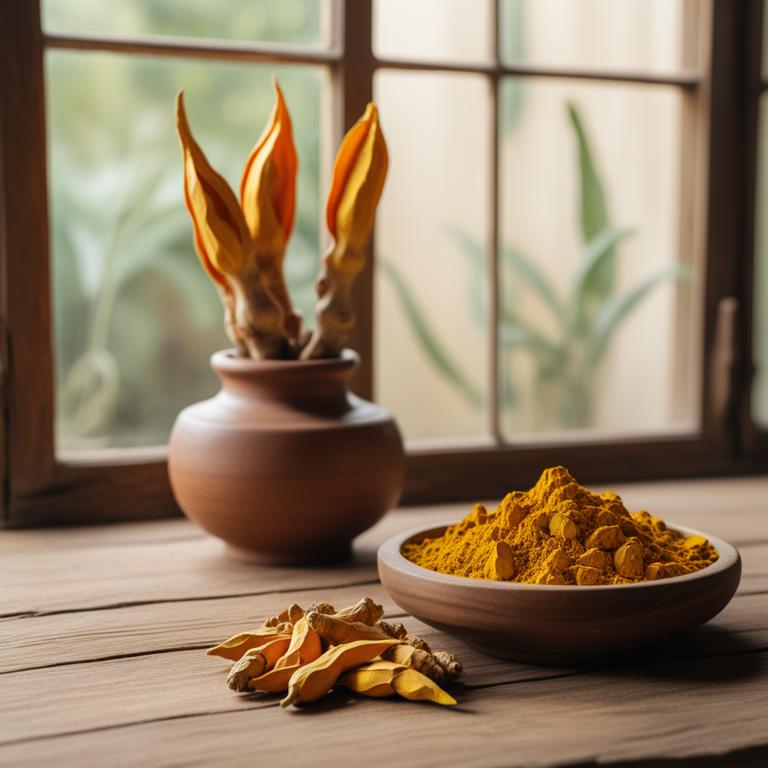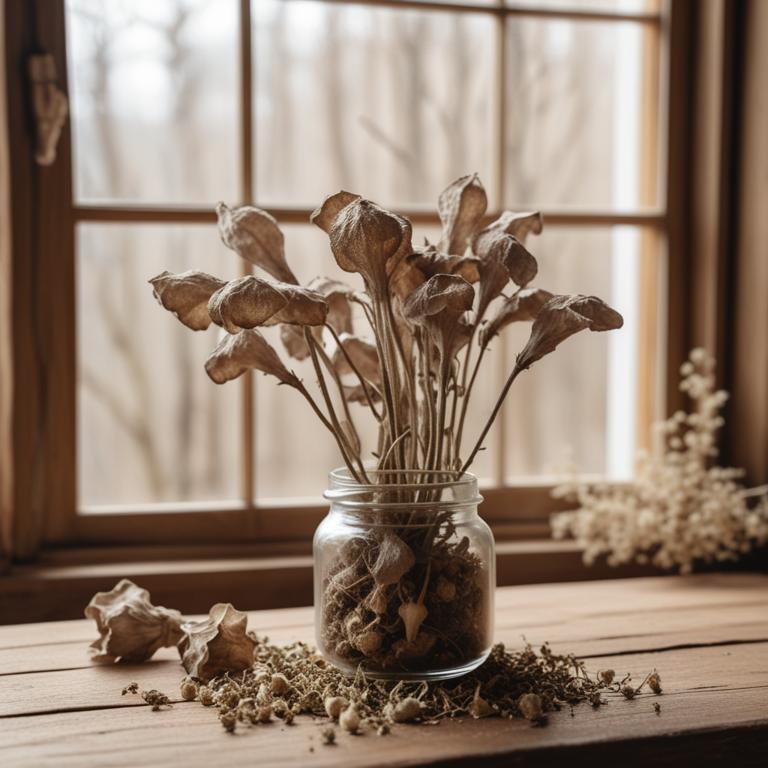Updated: Nov 30, 2024
10 Herbal Tinctures For Open Wounds
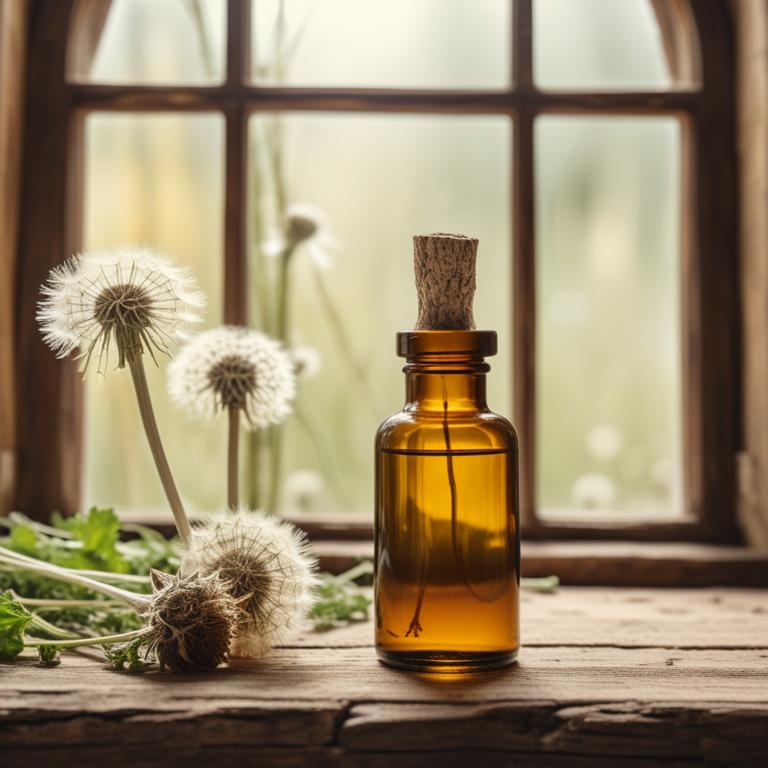
Herbal tinctures can be a great way to help heal open wounds.
These are liquid extracts made from plants, and they can be used topically to promote healing. Some herbs are particularly effective for wound healing, such as Calendula officinalis, also known as marigold. This herb is known for its anti-inflammatory and antimicrobial properties, which can help prevent infection and promote tissue repair. Hypericum perforatum, or St. John's Wort, is another herb that's been used to aid in wound healing. It contains compounds that can help stimulate collagen production, which is an essential protein for skin regeneration.
This can lead to faster healing times and reduced scarring. Symphytum officinale, also known as comfrey, is another herb that's been used to aid in wound healing. It contains allantoin, a compound that can help stimulate cell growth and promote tissue repair. This can be especially helpful for wounds that are slow to heal or have a high risk of infection. Using herbal tinctures for wound healing can be beneficial because they often work quickly and naturally. They can also be less invasive than traditional treatments and may have fewer side effects.
Additionally, using herbal tinctures can be a more holistic approach to wound healing, addressing the root cause of the issue rather than just treating the symptoms.
This article explains in detail what are the best herbal teas for open wounds and wh.
Also, you may be interested in...
Today Free Bonus!
The Ultimate Herb Drying Checklist
(For Long-Lasting Powerful Medicinal Effect)
How to easily dry herbs that don't mold and that keep their strong medicinal power for more than 1 year.
Table of Contents
1. Calendula officinalis
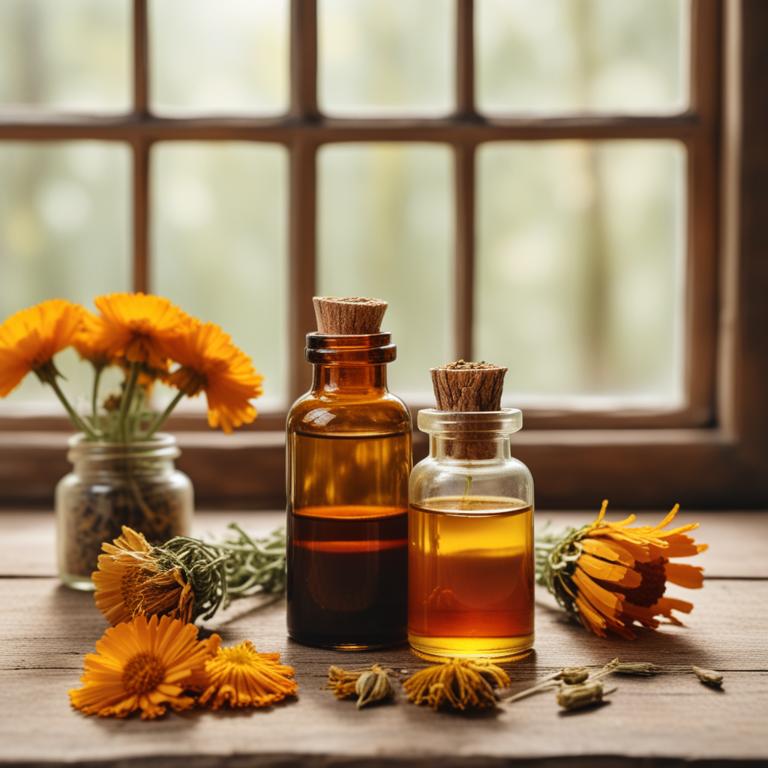
Calendula officinalis tinctures contains triterpene saponins, flavonoids, and carotenoids as its main bioactive constituents.
These compounds help to promote wound healing by reducing inflammation and fighting off bacterial and fungal infections. The flavonoids in calendula tinctures have antioxidant properties that protect the wound from oxidative damage and promote tissue regeneration. The carotenoids, specifically beta-carotene, have anti-inflammatory properties that help to reduce redness and swelling in the affected area.
By reducing bacterial load and promoting tissue regeneration, calendula tinctures can help to accelerate the healing process of open wounds.
- Gather 1 cup of fresh Calendula officinalis flowers and 2 cups of 80-proof vodka in a clean glass jar.
- Pack the Calendula flowers tightly into the jar, leaving about 1 inch of space at the top.
- Pour the vodka over the flowers, making sure they are completely covered.
- Seal the jar and let it sit in a cool, dark place for 2-3 weeks, shaking the jar every day.
- Strain the liquid through a cheesecloth or a coffee filter into another clean glass jar, discarding the solids.
2. Hypericum perforatum
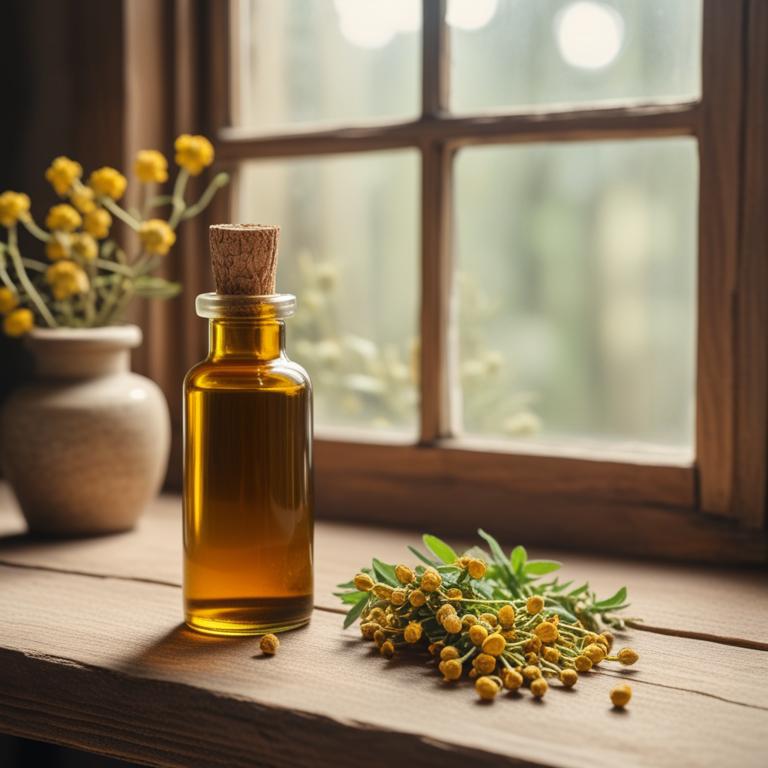
Hypericum perforatum tinctures contains hypericin and hyperforin, two active constituents that help with open wounds.
Hypericin has antimicrobial properties that fight bacteria and other microorganisms that can infect wounds. Hyperforin has anti-inflammatory properties that reduce swelling and promote healing. These properties help to prevent infection and promote a clean environment for the wound to heal.
By using Hypericum perforatum tinctures, the risk of infection is reduced, and the wound can heal faster.
- Gather 250ml of vodka, 1 cup of dried Hypericum perforatum flowers, and a clean glass jar.
- Combine the dried flowers and vodka in the glass jar, making sure the flowers are fully covered.
- Seal the jar and let it sit in a cool, dark place for 2-3 weeks, shaking the jar every day.
- After 2-3 weeks, strain the liquid through a cheesecloth or a coffee filter into another clean glass jar, discarding the solids.
- Store the Hypericum perforatum tincture in a cool, dark place and use 5-7 drops as needed to treat open wounds.
3. Symphytum officinale
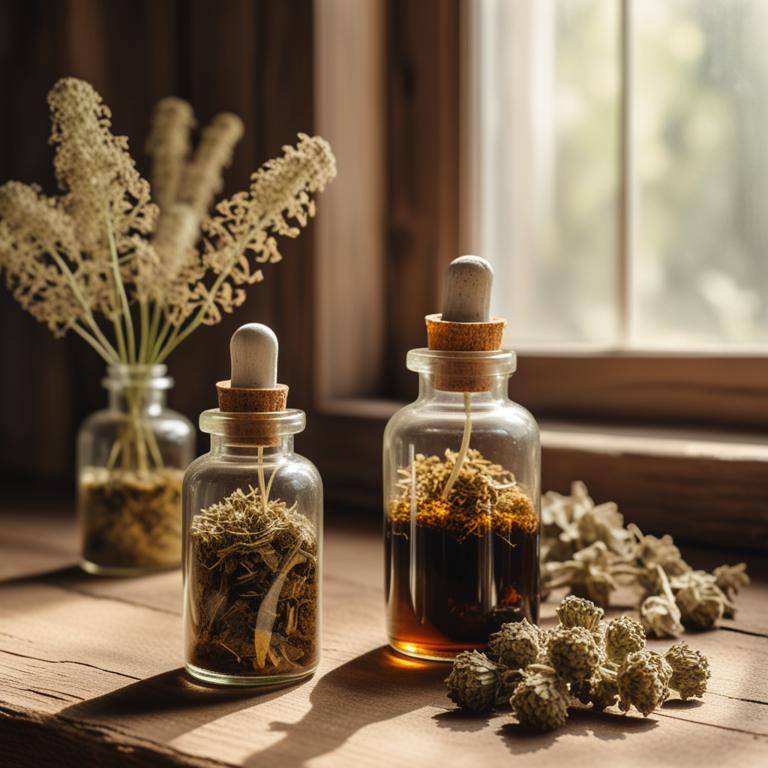
Symphytum officinale tinctures contains the active constituents allantoin, mucilages, and glycosides.
Allantoin helps to promote wound healing by breaking down dead tissue and promoting the growth of new tissue. Mucilages create a protective barrier on the wound surface, preventing further irritation and infection. Glycosides have anti-inflammatory properties, reducing swelling and pain in the affected area.
These properties work together to create a supportive environment for wound healing, making Symphytum officinale tinctures a useful remedy for open wounds.
- Gather 1 cup of fresh Symphytum officinale leaves and flowers, and 1 cup of 80-proof vodka or ethanol.
- Chop the leaves and flowers into small pieces and place them in a clean glass jar.
- Add 1 cup of 80-proof vodka or ethanol to the jar, making sure the plant material is completely covered.
- Seal the jar and let it sit in a cool, dark place for 2-6 weeks, shaking the jar every day.
- Strain the liquid through a cheesecloth or a coffee filter into another clean glass jar, and discard the plant material.
4. Aloe barbadensis
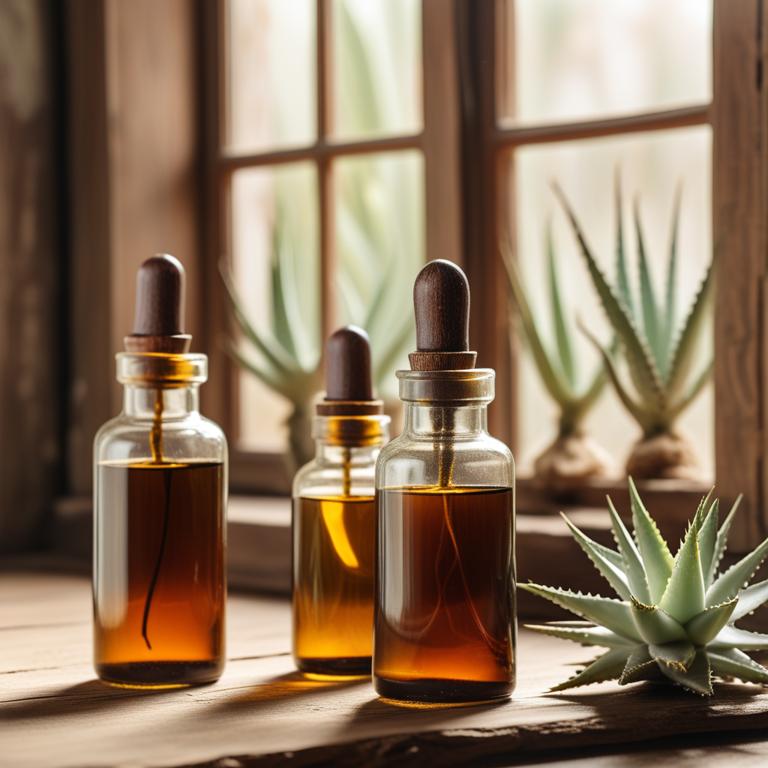
Aloe barbadensis tinctures contains compounds like aloin, aloe-emodin, and vitamins A, C, and E. These bioactive constituents have anti-inflammatory properties that help reduce swelling and promote healing in open wounds.
Aloe-emodin, in particular, has antibacterial properties that fight off infections and prevent further damage to the wound. Aloin helps to stimulate collagen production, which is essential for tissue repair and wound closure.
By combining these properties, Aloe barbadensis tinctures can help to create an environment that promotes the natural healing process of open wounds.
- Gather 1 cup of Aloe barbadensis leaves, fresh or dried, and a clean glass jar.
- Chop the Aloe leaves into small pieces and add 2 cups of 80% vodka or other high-proof spirit to the jar.
- Seal the jar and let it sit in a cool, dark place for 2-3 weeks, shaking the jar every day.
- After 2-3 weeks, strain the mixture through a cheesecloth or a coffee filter into another clean glass jar.
- Discard the solids and store the Aloe tincture in the refrigerator. Use 5-10 drops of the tincture on the wound 2-3 times a day.
5. Arnica montana
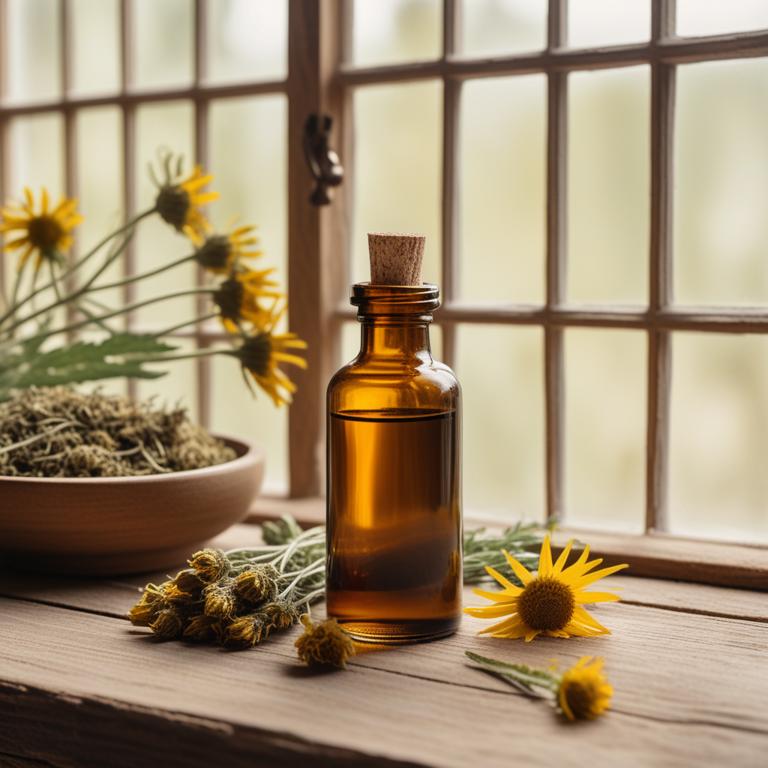
Arnica montana tinctures contains bioactive constituents like sesquiterpene lactones, flavonoids, and phenolic acids.
These compounds have anti-inflammatory and antimicrobial properties that help prevent infection and promote wound healing. The sesquiterpene lactones, in particular, have been shown to reduce inflammation and prevent the formation of scar tissue. The flavonoids and phenolic acids in Arnica montana tinctures have antioxidant properties that help protect the wound from oxidative stress and promote the growth of new tissue.
By reducing inflammation and preventing infection, Arnica montana tinctures can help create a favorable environment for wound healing.
- Gather 1 cup of Arnica montana flowers and 2 cups of vodka in a clean glass jar.
- Add the Arnica flowers to the jar and pour in the vodka, making sure the flowers are completely covered.
- Close the jar and shake it well for 2-3 minutes to help mix the flowers and vodka.
- Store the jar in a cool, dark place and let it sit for 2-3 weeks, shaking the jar every day.
- Strain the liquid through a cheesecloth or a coffee filter into a clean glass bottle, and discard the solids.
6. Echinacea purpurea
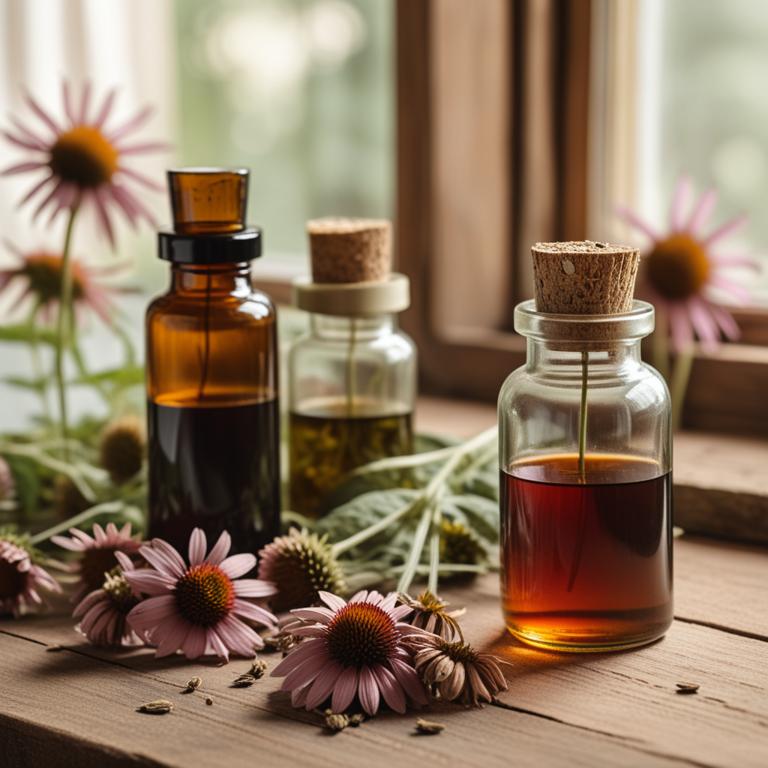
Echinacea purpurea tinctures contains flavonoids, alkylamides, and phenolic acids, which contribute to its ability to help with open wounds.
Flavonoids, specifically rutin and quercetin, have anti-inflammatory properties that reduce swelling and promote healing. Alkylamides, such as cis- and trans-11-cis-isobutylisobutyrate, stimulate the immune system and increase the production of white blood cells, which fight off infection. Phenolic acids, like caffeic and ferulic acid, have antimicrobial properties that prevent the growth of bacteria and fungi in the wound.
By reducing inflammation, fighting off infection, and promoting healing, Echinacea purpurea tinctures can help create an environment conducive to wound closure.
- Gather 1 cup of fresh Echinacea purpurea flowers and leaves. Clean them with water.
- Use 1 cup of vodka (at least 80 proof) in a clean glass jar. Add the cleaned Echinacea flowers and leaves.
- Fill the jar with enough vodka to cover the Echinacea mixture completely. Make sure the flowers are fully submerged.
- Seal the jar and store it in a cool, dark place for 2-3 weeks. Shake the jar every day.
- Strain the liquid through a cheesecloth or a coffee filter into a clean glass bottle. Discard the solids. Use 5-10 drops of the tincture for wound care.
7. Urtica dioica
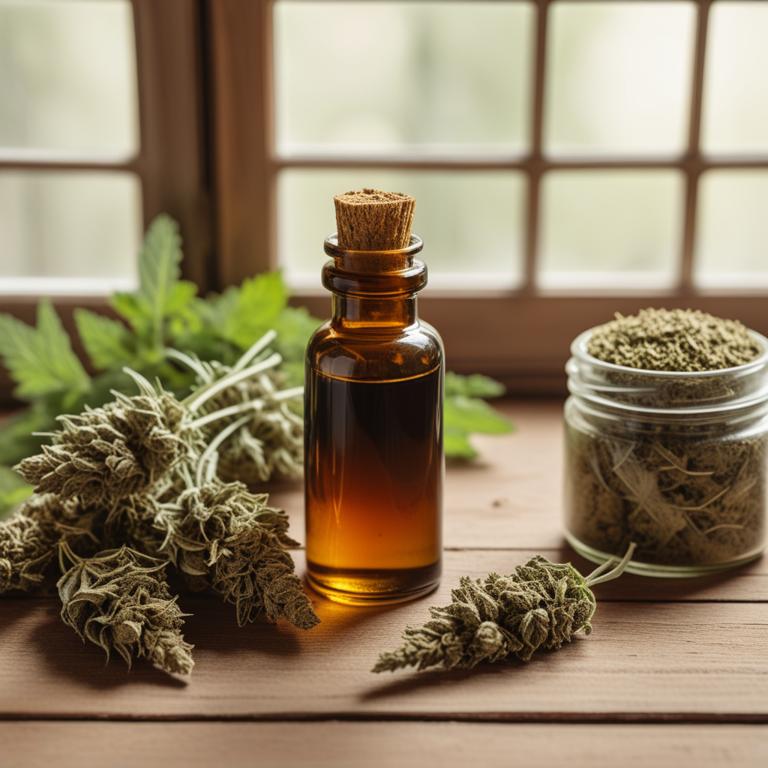
Urtica dioica tinctures contains several bioactive constituents that make it beneficial for open wounds.
The tannins in Urtica dioica tinctures help to stop bleeding by constricting blood vessels and reducing inflammation. The polysaccharides in the tincture stimulate the production of collagen, which is essential for wound healing. The flavonoids and phenolic acids in Urtica dioica tinctures also have antimicrobial properties, which prevent infection in open wounds.
By promoting wound healing and preventing infection, Urtica dioica tinctures can aid in the recovery of open wounds.
- Gather 250ml of 80% ethanol and 250g of fresh Urtica dioica leaves. Wear gloves to prevent skin irritation.
- Chop the Urtica dioica leaves and add them to a clean glass jar. Fill the jar with 250ml of 80% ethanol, making sure the leaves are completely covered.
- Close the jar and let it sit in a cool, dark place for 2-3 weeks, shaking the jar every day. This will allow the ethanol to extract the plant's properties.
- After 2-3 weeks, strain the liquid through a cheesecloth or a coffee filter into another clean glass jar. Discard the solids.
- Label the tincture and store it in a cool, dark place. Use 5-10 drops of the tincture on the open wound 2-3 times a day, diluted with water if needed.
8. Hamamelis virginiana
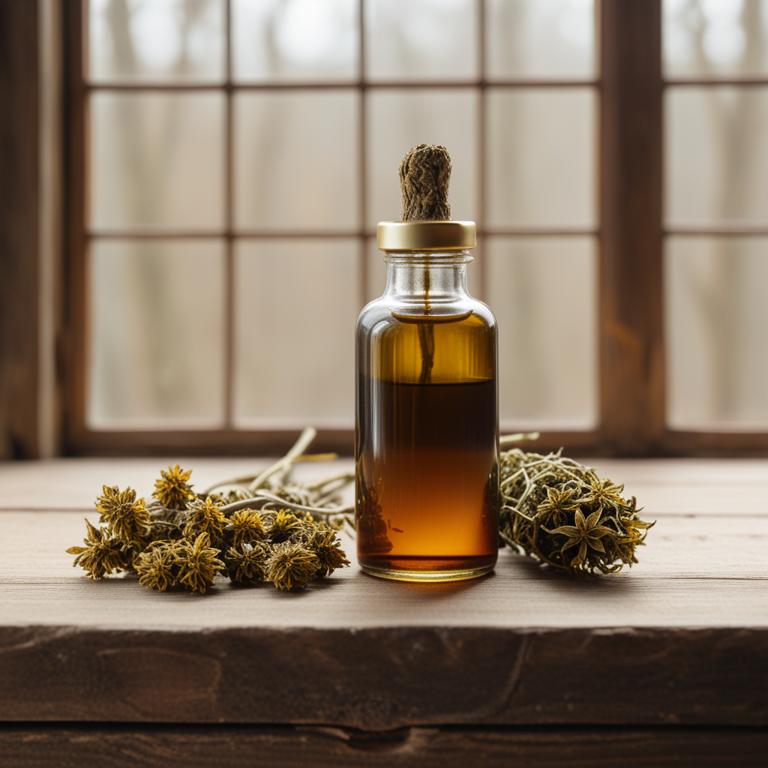
Hamamelis virginiana tinctures contains compounds like gallic acid, hamamelitannin, and vasicinone.
These bioactive constituents have antiseptic properties, which help to prevent infection in open wounds. The tannins in Hamamelis virginiana tinctures have astringent properties, reducing blood flow and preventing excessive bleeding. Additionally, the antiseptic properties of gallic acid and hamamelitannin help to kill bacteria and other pathogens that can infect open wounds.
By reducing the risk of infection and controlling bleeding, Hamamelis virginiana tinctures can promote a healthy environment for wound healing.
- Gather 1 cup of fresh Hamamelis virginiana leaves, flowers, and twigs in a clean bowl.
- Combine the plant material with 2 cups of 80-proof vodka or grain alcohol in a clean glass jar.
- Seal the jar and store it in a cool, dark place for 2-3 weeks, shaking the jar every day.
- Strain the liquid through a cheesecloth or a coffee filter into another clean glass jar, discarding the solids.
- Store the tincture in a cool, dark place and use 10-20 drops on the wound 3-4 times a day to help promote healing.
9. Glycyrrhiza glabra
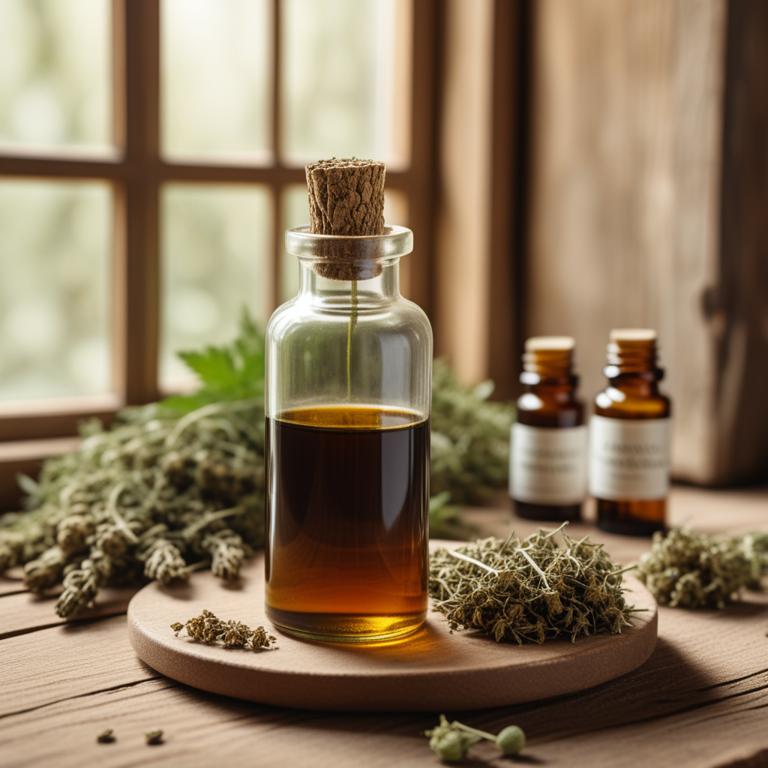
Glycyrrhiza glabra tinctures contains licorice root, a plant rich in glycyrrhizin, flavonoids, and triterpenoid saponins.
Glycyrrhizin has anti-inflammatory properties, which help reduce swelling and pain in open wounds. Flavonoids, such as liquiritin and isoliquiritigenin, have antimicrobial properties that prevent the growth of bacteria and other pathogens that can cause infection. Triterpenoid saponins, like glycyrrhetic acid, promote wound healing by increasing blood flow and reducing oxidative stress.
This combination of compounds in Glycyrrhiza glabra tinctures helps create an environment conducive to wound healing and infection prevention.
- Gather 1 cup of dried Glycyrrhiza glabra root, 2 cups of vodka (95% or higher), and a clean glass jar.
- Combine the dried root and vodka in the glass jar. Close the jar and shake it well.
- Store the jar in a cool, dark place for 2-3 weeks. Shake the jar every day to help the mixture.
- After 2-3 weeks, strain the liquid through a cheesecloth or a coffee filter into another clean glass jar. Discard the solids.
- Store the Glycyrrhiza glabra tincture in the refrigerator. Use 2-3 tablespoons of the tincture per application to open wounds, mixed with a small amount of water.
10. Taraxacum officinale

Taraxacum officinale tinctures contains bioactive compounds like flavonoids, saponins, and terpenoids, which have anti-inflammatory and antimicrobial properties.
The flavonoids in Taraxacum officinale tinctures, such as quercetin and kaempferol, help reduce swelling and pain in open wounds by inhibiting the production of pro-inflammatory enzymes. The saponins in the tincture have antimicrobial properties, which prevent the growth of bacteria and fungi in the wound, promoting a clean and healthy environment for healing. The terpenoids, including taraxasterol and taraxol, have antiseptic and antifungal properties, further reducing the risk of infection in open wounds.
By reducing inflammation and preventing infection, Taraxacum officinale tinctures can help promote a faster and more efficient healing process for open wounds.
- Gather 1 cup of fresh Taraxacum officinale leaves and flowers.
- Combine the Taraxacum officinale with 2 cups of 80% vodka in a clean glass jar.
- Steep the mixture in a cool, dark place for 2-3 weeks, shaking the jar every day.
- Strain the liquid through a cheesecloth or a coffee filter into another clean jar. Discard the solids.
- Transfer the tincture to small glass bottles with dropper lids and store in a cool, dark place.
FAQ
Can drinking herbal tea prevent open wounds from forming?
Drinking herbal tea may help prevent open wounds from forming, but it's not a substitute for good wound care.
Some herbal teas, like those with aloe vera or tea tree oil, have antibacterial properties that can promote healing.
However, their effectiveness in preventing wounds is still being researched.
Is it safe to consume herbal teas for open wounds every day?
Consuming herbal teas for open wounds daily is not recommended.
Some herbal teas, like peppermint and chamomile, can cause skin irritation or allergic reactions. This can slow healing and make wounds more prone to infection.
It's best to wait until the wound is closed before drinking herbal teas.
How long does it take for herbal teas to show results in open wounds?
Herbal teas for open wounds usually start showing results within 2 to 7 days.
They promote healing by increasing blood flow and reducing inflammation. Some teas, like aloe vera and chamomile, have anti-inflammatory properties that help soothe the wound.
The wound may start to close faster and become less painful.
What time of day is best to drink herbal tea for open wounds?
For open wounds, it's generally best to drink herbal tea in the evening, after cleaning and dressing the wound. This allows the tea's soothing properties to take effect while you rest, promoting a calm environment that can aid in the healing process.
Related Articles
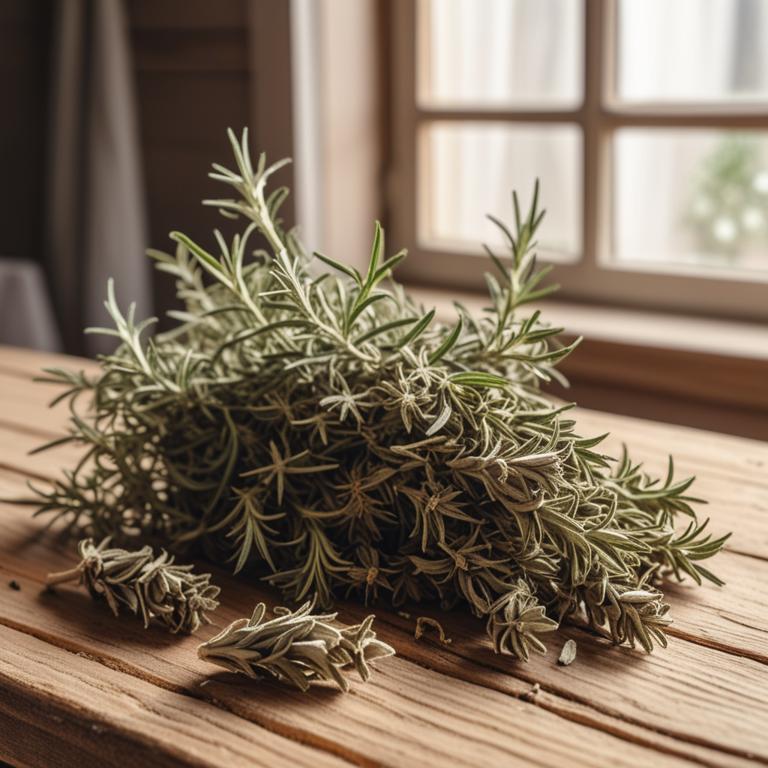
Dry Hair: Causes, Medicinal Herbs, and Herbal Preparations for Healthy Locks
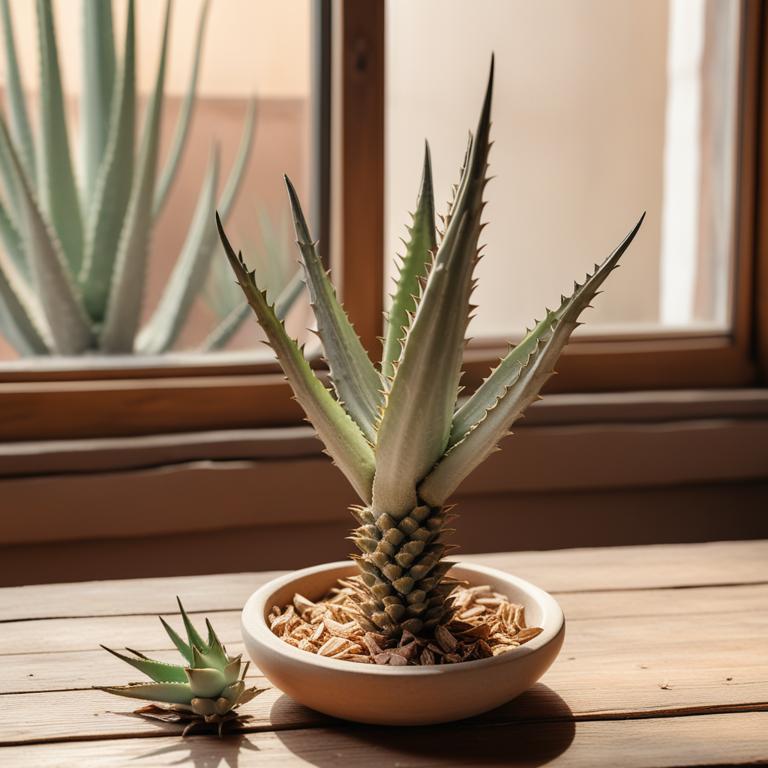
Eye Swelling: Causes, Symptoms, and Medicinal Herb Remedies
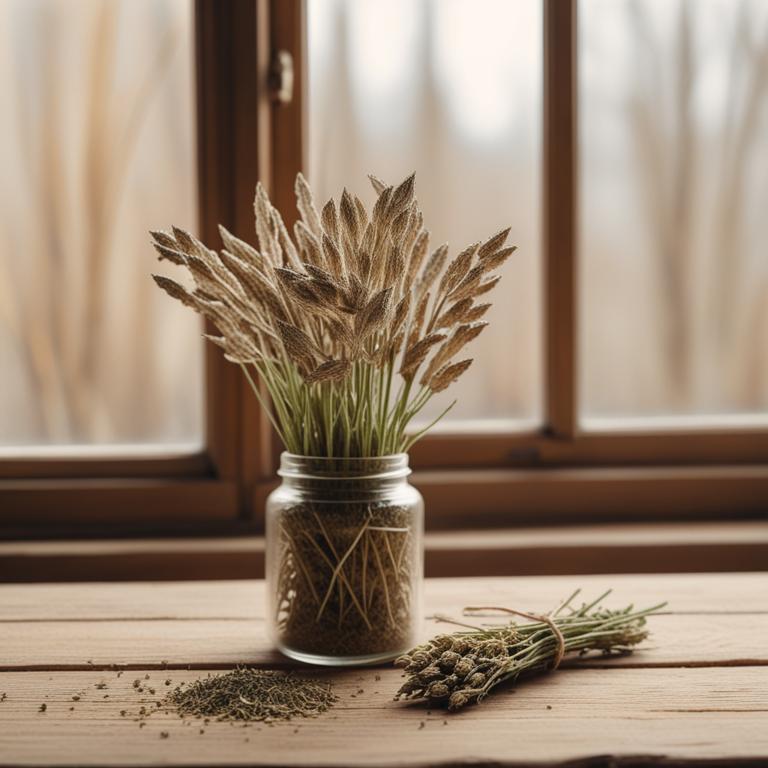
Treating Burns: Common Causes, Herbal Remedies, and Natural Preparations
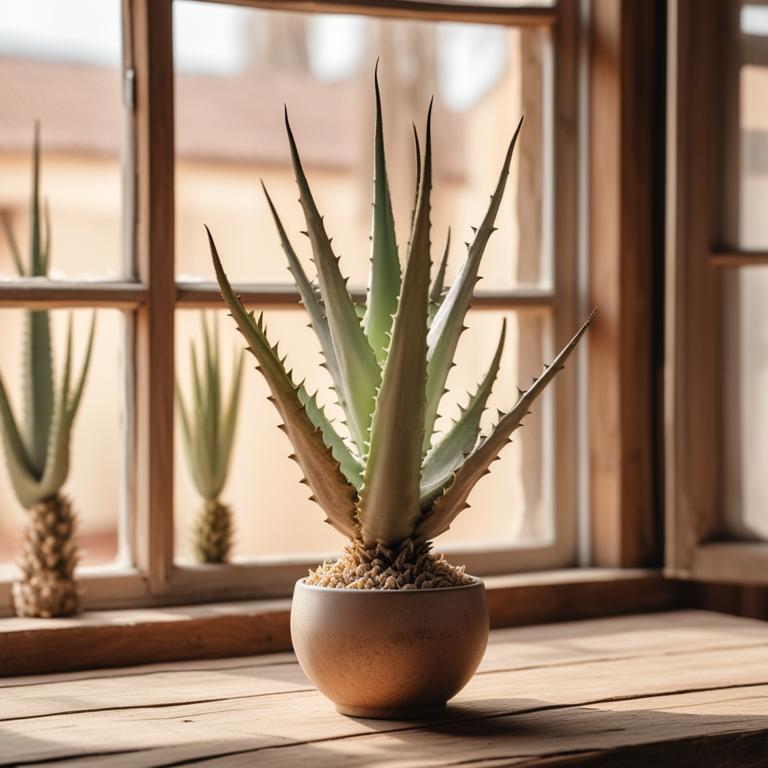
Causes and Remedies of Burning Feet: Medicinal Herbs and Herbal Preparations

Rashes: Causes and Homeopathic Herbal Solutions




